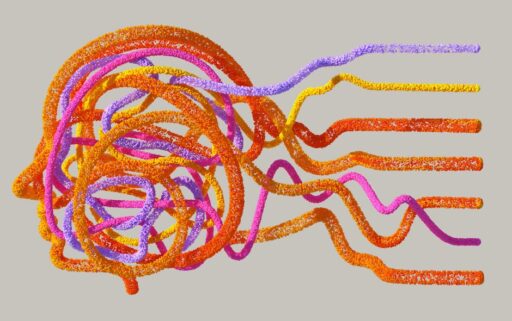AI Pesticide Discovery: Bindwell Reinvents Crop Protection
Two young founders reimagined how pesticides are discovered and turned an idea into a company focused on AI pesticide discovery and in-house molecule design. Rather than simply selling models or consulting, the startup built proprietary machine learning systems to identify and design new pesticide molecules and now licenses the resulting intellectual property to industry partners. Their seed raise and early validation signal a growing intersection between computational biology methods and agricultural chemistry — an arena ripe for modernization.
Why computational pesticide discovery matters now
Pest pressure remains one of agriculture’s persistent challenges. For decades, many crop protection strategies have relied on iterative changes to legacy chemistries and broad-spectrum compounds that can harm non-target species, accelerate resistance, and create regulatory and environmental headaches. AI pesticide discovery reframes the problem: rather than trial-and-error chemistry, it uses protein structures, binding predictions, and uncertainty-aware models to design molecules that target pest-specific biology while minimizing collateral damage.
From drug discovery to crop protection
Techniques borrowed from pharmaceutical research — structure prediction, protein-ligand interaction modeling, and high-throughput in silico screening — are increasingly applicable to agricultural targets. The biochemical principles that govern protein binding and inhibition are the same whether the aim is a therapeutic or a biopesticide. Adapting those methods to agriculture promises faster candidate identification, fewer wasted synthesis cycles, and the opportunity to design specificity into molecules from the outset.
How did Bindwell pivot to IP-first licensing?
The founders originally intended to build AI tools for established agrochemical companies but found limited industry appetite for model licensing as a core discovery workflow. In response, they shifted to an IP-first model: use proprietary models to design new pesticide molecules in-house, validate them experimentally, and license the resulting chemistry and data to larger firms. This approach reduces the friction of enterprise adoption, positions the startup as an originator of novel active ingredients, and aligns incentives around measurable, validated efficacy.
Key aspects of the new approach
- End-to-end molecule design: from target identification to in silico binding optimization.
- Uncertainty quantification: models flag when predictions need more data or validation.
- Targeted specificity: select protein targets unique to pests to reduce non-target impacts.
- Licensing and partnerships: license validated molecules, rather than selling raw models.
What technology underpins modern AI pesticide discovery?
AI pesticide discovery systems typically combine several components that together accelerate and focus discovery:
Structure prediction
Accurate models of pest protein structures are the foundation for rational molecule design. Improved structure prediction reduces experimental guesswork and helps direct chemists to promising binding pockets.
Protein-ligand interaction models
Binding affinity predictors score how well a candidate molecule is likely to bind a target protein. Rapid scanning of large compound sets allows teams to prioritize a small number of high-quality candidates for synthesis and testing.
Protein–protein interaction screening
For biopesticides and peptide-based strategies, modeling how proteins interact with other proteins or receptors can identify mechanisms to disrupt pest physiology without conventional small molecules.
Uncertainty-aware pipelines
To reduce hallucination and overconfidence, production-grade discovery pipelines embed uncertainty estimation and validation gates that indicate when more experimental data are required. This safety net is crucial for high-stakes chemistry that will later be tested in the field.
How can AI truly change pesticide discovery?
Short answer: By shifting discovery from exhaustive physical screening to targeted, biology-driven candidate generation, AI can shorten timelines, lower synthesis costs, and produce molecules designed to minimize non-target harm.
- Target-first workflows reduce the number of chemistry rounds required.
- In silico screening prioritizes high-probability candidates, saving lab resources.
- Designing molecules for specificity mitigates resistance and ecological impacts.
- Data-driven IP enables new business models focused on licensing and co-development.
Snippet-friendly summary
AI-driven pesticide discovery uses protein structures and binding models to identify targeted molecules, enabling faster, cheaper, and more environmentally mindful crop protection alternatives to legacy chemicals.
Potential benefits for farmers and ecosystems
When executed responsibly, AI-led discovery can produce outcomes that matter to growers, regulators, and conservationists:
- Increased efficacy against evolving pests with lower application rates.
- Reduced off-target toxicity to pollinators and aquatic life.
- Faster route-to-market for novel modes of action that can alleviate resistance issues.
- Data packages and validated assays that de-risk licensing and regulatory approval.
Risks, hurdles, and regulatory realities
The promise comes with clear challenges:
Regulatory approval is rigorous
Pesticides face strict environmental, toxicological, and residue testing. In silico predictions accelerate candidate selection, but extensive lab, greenhouse, and field trials remain mandatory before commercial release.
Resistance management
Designing for specificity helps, but any new active ingredient can eventually face resistance. Integrated pest management practices and stewardship programs must accompany new chemistries to extend their useful life.
Scaling synthesis and field validation
Computational hits still require chemical synthesis, formulation, and large-scale efficacy testing — steps that are expensive and time-consuming. Strong industry partnerships and contract research networks are critical.
Model reliability and transparency
Reducing model hallucination and providing transparent confidence metrics are essential to build trust with regulators and commercial partners. Explainability and reproducible benchmarks help adoption.
Business model: why license IP rather than sell models?
Licensing validated molecules addresses a few practical realities. Many large agrochemical firms prefer to acquire or license proven chemistry rather than integrate external models into their core R&D. Licensing also creates clear commercial value from successful candidates and aligns incentives: the designer benefits from downstream commercial success, while partners receive a de-risked asset backed by data and early validation.
Where Bindwell fits in the broader AI and ag-tech landscape
Bindwell’s story illustrates a broader trend: startups adapting powerful computational biology tools to non-pharma domains. For readers interested in how high-quality data and model design matter across AI applications, see our coverage of The Role of High-Quality Data in Advancing AI Models. The environmental trade-offs of scaling compute-intensive discovery also merit attention — read The Environmental Impact of AI to understand energy implications and mitigation strategies. Finally, robust validation and simulation frameworks are critical to surface fragile behaviors before field tests; see our analysis of simulation environments in AI Agent Simulation Environment: Revealing Fragile Behaviors.
Practical steps for industry stakeholders
For agrochemical companies, investors, and research organizations evaluating AI pesticide discovery, consider the following roadmap:
- Assess data readiness: genomic, proteomic, and phenotypic datasets must be high quality and well-curated.
- Require uncertainty metrics: insist on confidence intervals and validation protocols for computational outputs.
- Plan for integrated trials: couple in silico work with rapid synthesis partners and phased field evaluation.
- Build stewardship programs: coordinate resistance management and environmental monitoring from day one.
What to watch next
Expect a wave of startups and established firms pursuing computational routes to novel modes of action. Key signals to monitor:
- Successful licensing deals between computational originators and global agrochemical firms.
- Peer-reviewed validation of in silico predictions against lab and field results.
- New regulatory frameworks addressing AI-designed molecules and their data transparency requirements.
Conclusion: a cautious optimism
AI pesticide discovery is not a silver bullet, but it is a powerful set of tools that can make pesticide discovery faster, more targeted, and more perceptive to ecological risk. Companies that combine robust computation, transparent uncertainty quantification, rigorous wet-lab validation, and responsible commercialization practices stand to modernize an industry long reliant on incremental chemistry. The next phase will be defined by partnerships that bridge computational innovation and field-tested agronomy.
Call to action
Want to stay informed about AI advances in agriculture and biotech? Subscribe to Artificial Intel News for weekly analysis, or reach out to discuss partnerships, licensing, and validation opportunities. If you’re working on computational discovery or field validation, contact us to share data, pilot projects, or research insights — together we can accelerate safer, smarter crop protection.






